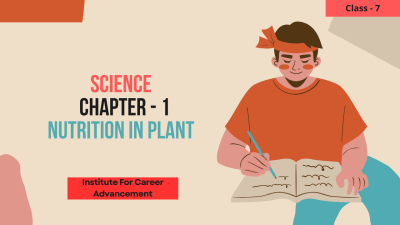Nutrition in Plant - Class 7
"Nutrition in Plants" for Class 7 typically covers how plants make their food through photosynthesis. It includes concepts like the parts of a plant involved in this process (leaves, chlorophyll), what plants need for photosynthesis (water, sunlight, carbon dioxide), and how they transport water and nutrients through their roots and stems. This topic also discusses different types of plants based on their mode of nutrition, such as autotrophs and heterotrophs. ক্লাস 7 এর জন্য "উদ্ভিদের পুষ্টি" সাধারণত সালোকসংশ্লেষণের মাধ্যমে কীভাবে উদ্ভিদ তাদের খাদ্য তৈরি করে তা কভার করে। এটিতে এই প্রক্রিয়ার সাথে জড়িত একটি উদ্ভিদের অংশ (পাতা, ক্লোরোফিল), সালোকসংশ্লেষণের জন্য উদ্ভিদের কী প্রয়োজন (জল, সূর্যালোক, কার্বন ডাই অক্সাইড) এবং কীভাবে তারা তাদের শিকড় এবং কান্ডের মাধ্যমে জল এবং পুষ্টি পরিবহন করে তার মত ধারণাগুলি অন্তর্ভুক্ত করে। এই বিষয়টিতে অটোট্রফ এবং হেটেরোট্রফের মতো তাদের পুষ্টির পদ্ধতির উপর ভিত্তি করে বিভিন্ন ধরণের উদ্ভিদ নিয়েও আলোচনা করা হয়েছে।
English
Last updated
Wed, 27-Nov-2024



















